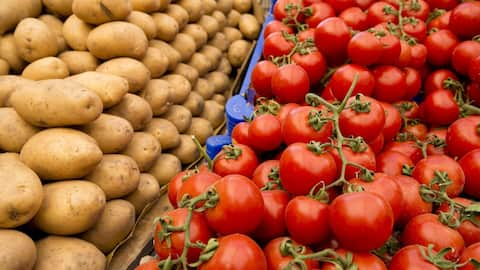Potatoes have tomato roots, and scientists are baffled
What's the story
Scientists have traced the origins of the humble potato to a surprising ancestor: the tomato. The discovery, published in the journal Cell, reveals that eight to nine million years ago, wild tomatoes and a species resembling potatoes coexisted. The study was led by Sanwen Huang from the Agricultural Genomics Institute at Shenzhen. "We've finally solved the mystery of where potatoes came from," he said.
Genetic ancestry
Hybridization event led to today's potatoes
The potato's lineage is part of a group called Petota, which was formed when tomato ancestors interbred with Etuberosum, a wild potato species found in central Chile. This hybridization event led to the creation of today's potatoes or tubers. The researchers were surprised to find that tubers have never been observed in either the modern tomato or Etuberosum lineages since their interbreeding.
Plant relation
Ancient hybridization and genetic patterns
Despite being a fruit, the tomato belongs to the same plant family as potatoes, eggplants, and tobacco. The researchers found that an event eight to nine million years ago led to the creation of the potato. They observed "mosaic-like" genetic patterns in Petota, indicating an even mix of DNA from both tomato and Etuberosum. This ancient hybridization was possible due to a common ancestor between 13-14 million years ago.
Genetic discovery
SP6A gene's role in potato growth
The study also found that the gene SP6A from the tomato lineage was responsible for instructing potatoes on how to grow tubers. The new potatoes emerging from this hybridization were more resilient to harsh climates and conditions, allowing them to store nutrients and water better than their predecessors. This resilience helped them spread across the world and evolve into a completely new lineage—the modern potato we know today.
Crop breeding
Reimagining potatoes with tomato genes for better yields
The cultivated potato we eat today is the world's third most important staple crop. Along with wheat, rice, and maize, it accounts for 80% of the world's human caloric intake, according to recent research. Understanding the potato's genetic origins could pave the way for innovations in crop breeding. Scientists are exploring ways to reintroduce key tomato genes into potatoes. This could potentially lead to fast-breeding potatoes that reproduce through seeds, revolutionizing how the crop is cultivated in the future.
